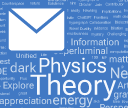I like to write. And most days I actually do write a lot. But most of it is not visible to the world at large. Hundreds of internal emails and documents. Pieces of content inside Wolfram|Alpha or Mathematica. The occasional unsigned public webpage or other document.
My purpose in this blog is to have a visible outlet for a little more of what I do, and what I think about.
I’m constantly thinking about new things. Coming up with new ideas. Getting new perspectives. Thinking of new possible projects to do.
Usually I don’t talk much about things until or unless I’ve actually done something real with them. Which can take years, and sometimes decades—if it happens at all.
But I’ve decided it’s time I started writing a little more about what I’m thinking about—rather than always waiting to have a complete, finished, project or product.
I’d also like to write about some of the things that happen in my life. In some ways my life is delightfully simple and ordinary. But in others I’ve chosen to make it pretty far out on the curve.
Some of the wildest and juiciest things that happen I won’t be able to write publicly about, typically because they’re someone’s corporate or personal secrets. Or because, frankly, I don’t want to tell the world about some things I’m doing before I’m ready.
I’m a great believer in the value of history, not least because I think it’s the best way to have an informed view about the future. I’ve also been a collector of stories—often as a participant. Sometimes the stories aren’t appropriate for public consumption, at least at the time. But I’ve now been around long enough that it’s beginning to be OK to tell pretty much any of the earlier ones. So I hope to have a chance to do that on this blog.
There’s a lot that I could write—about all sorts of topics. Some of it is timely; some of it I just think I should write down sometime.
I’ll enjoy writing whatever I end up writing. But if people want to request particular topics, please contact me. I suspect there are a lot of things where I might have something interesting to say, but I’ve never realized it. So ask me!






